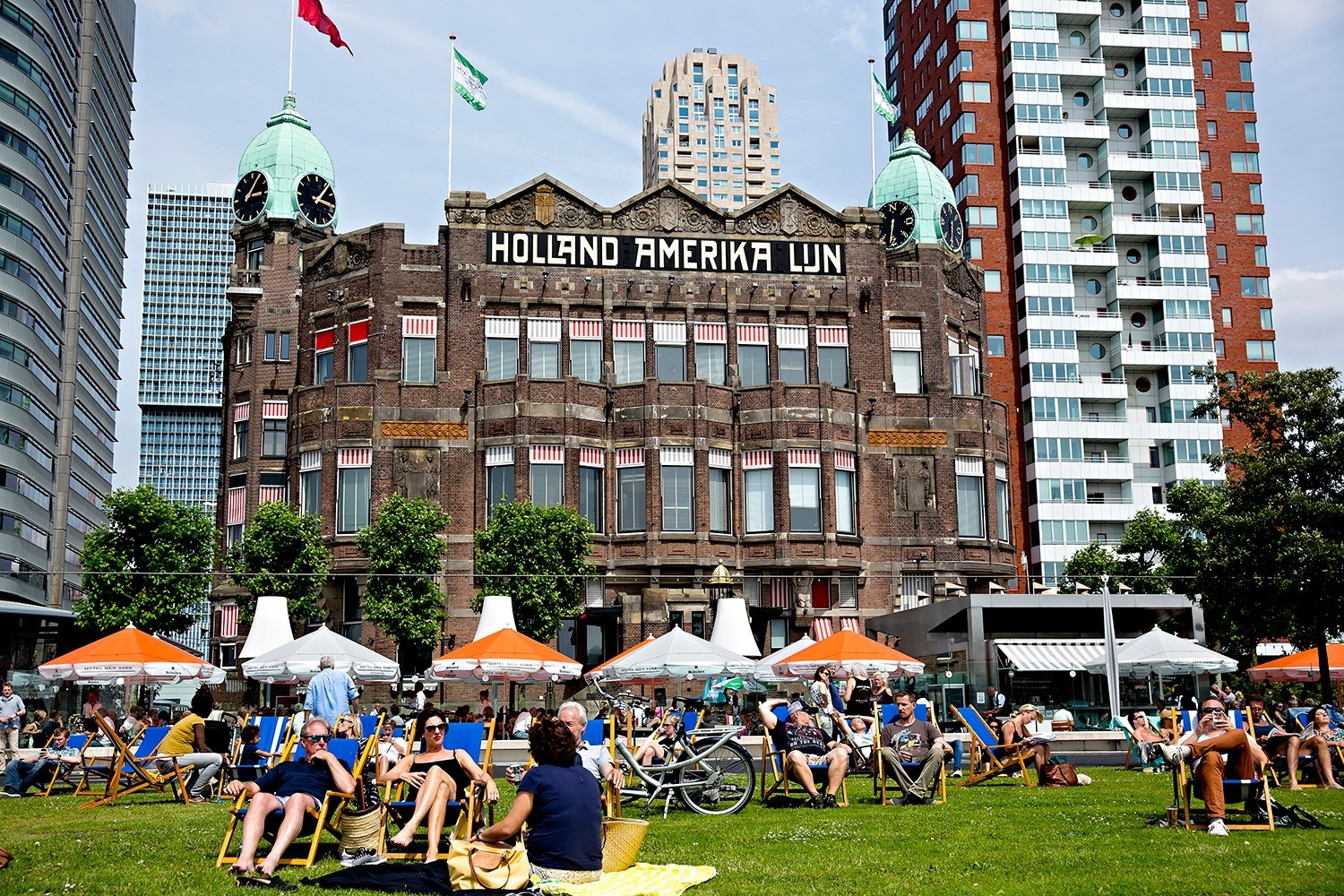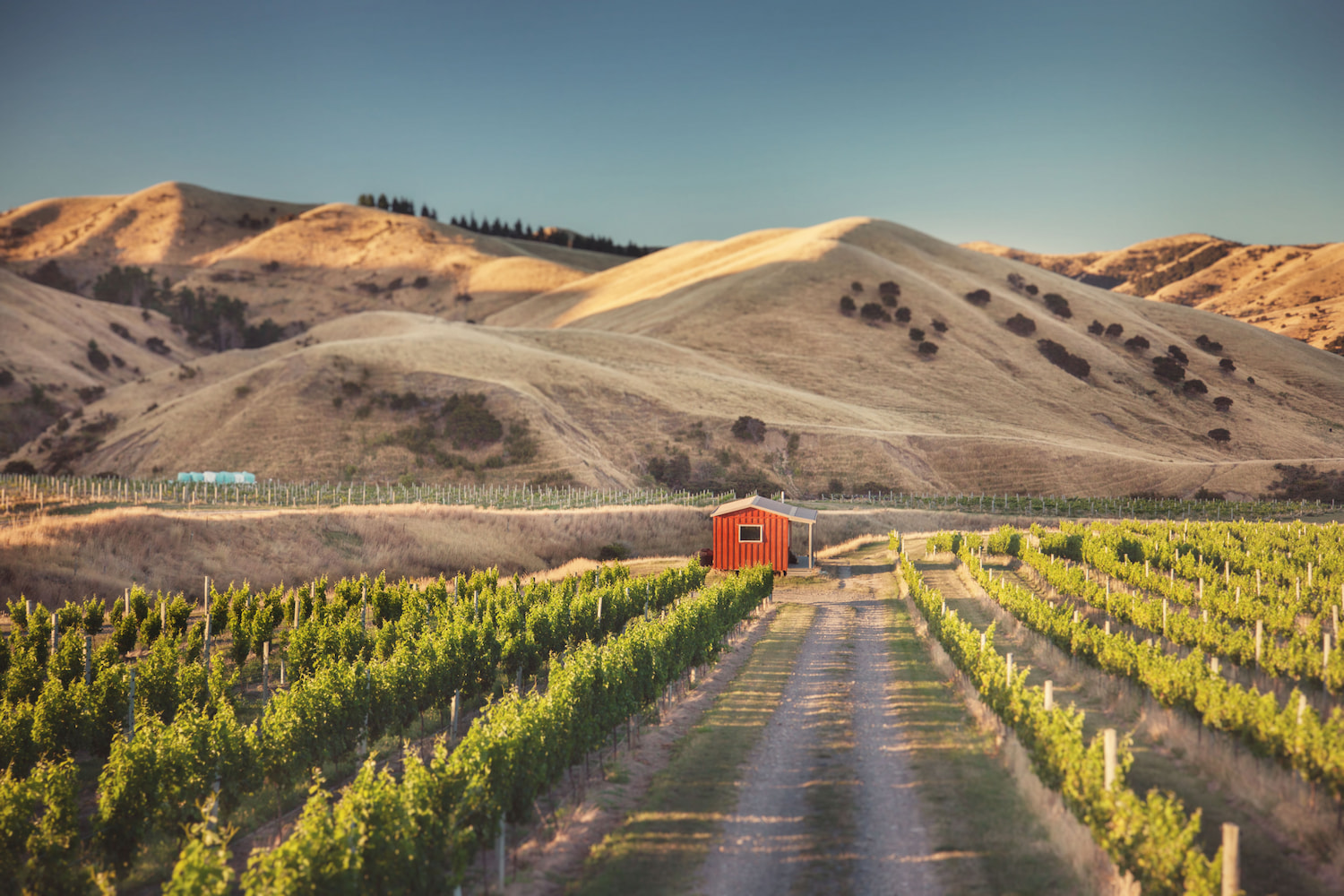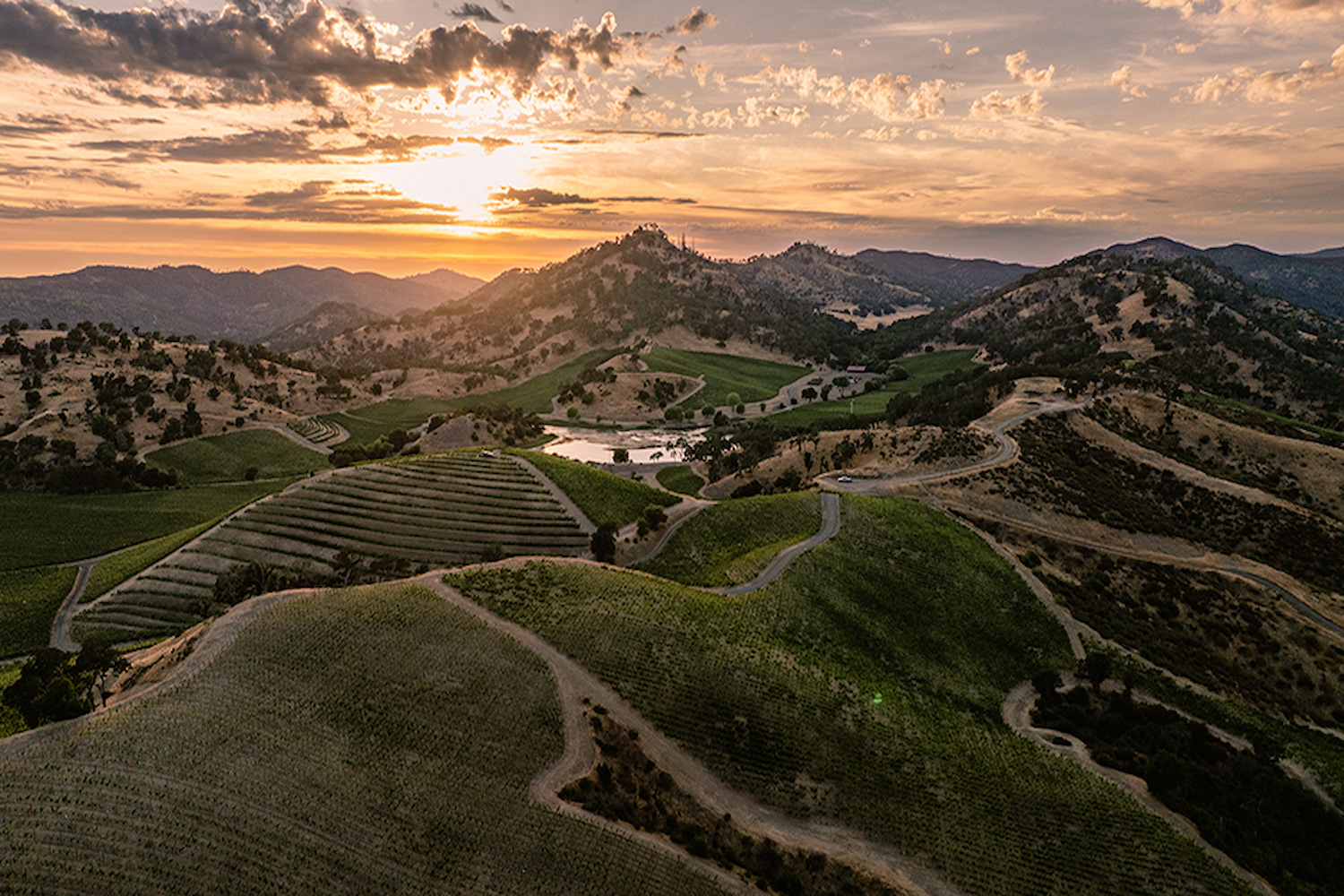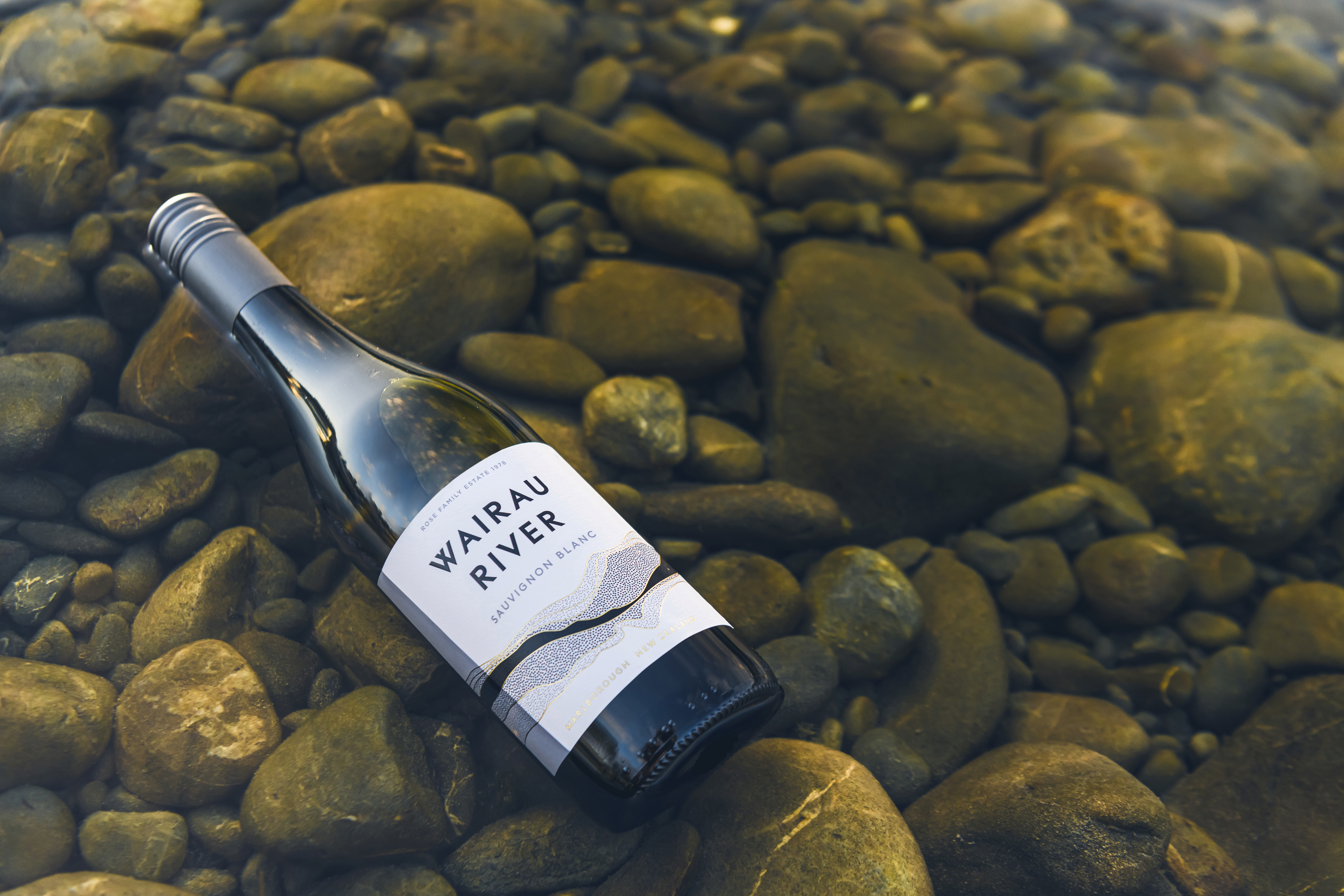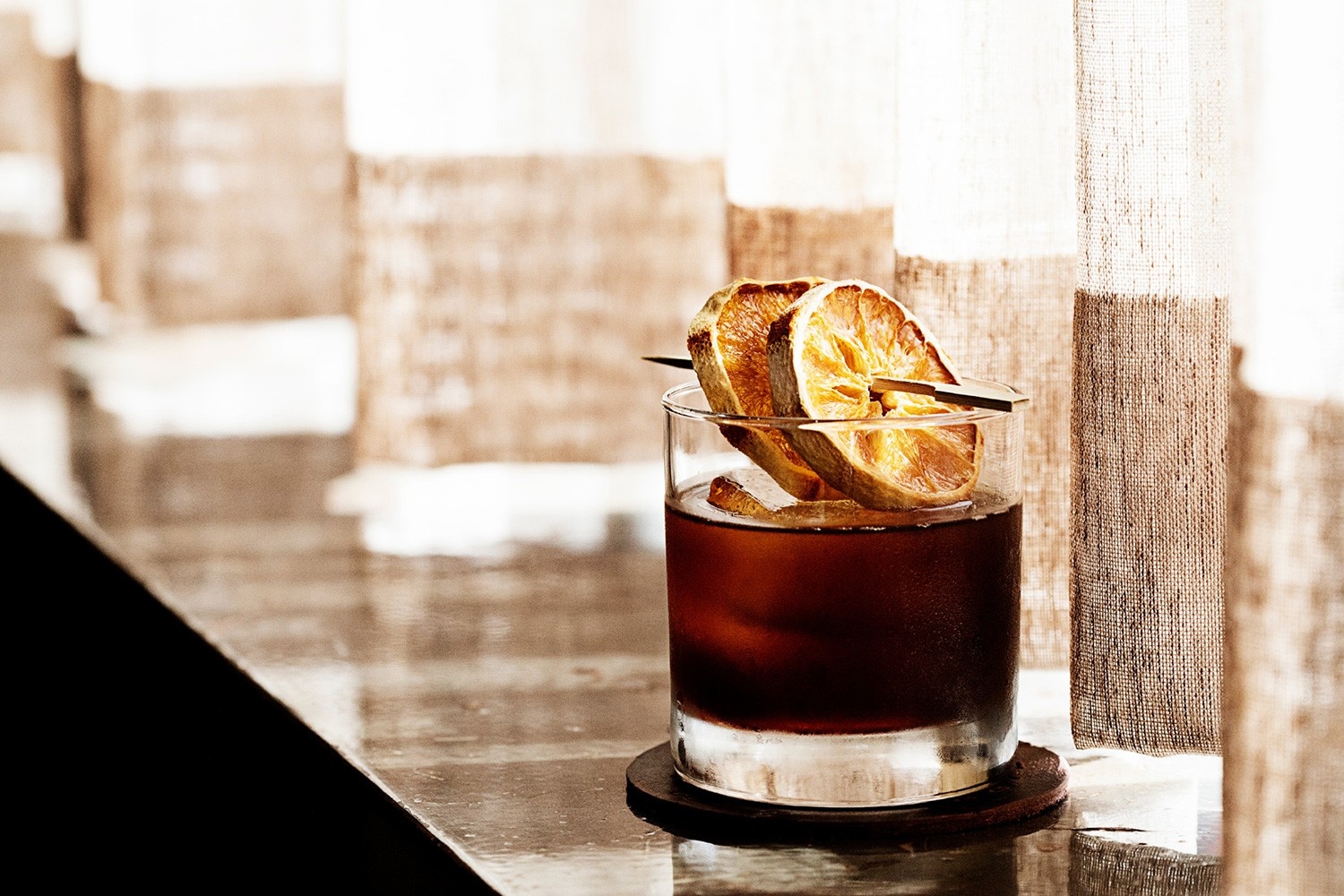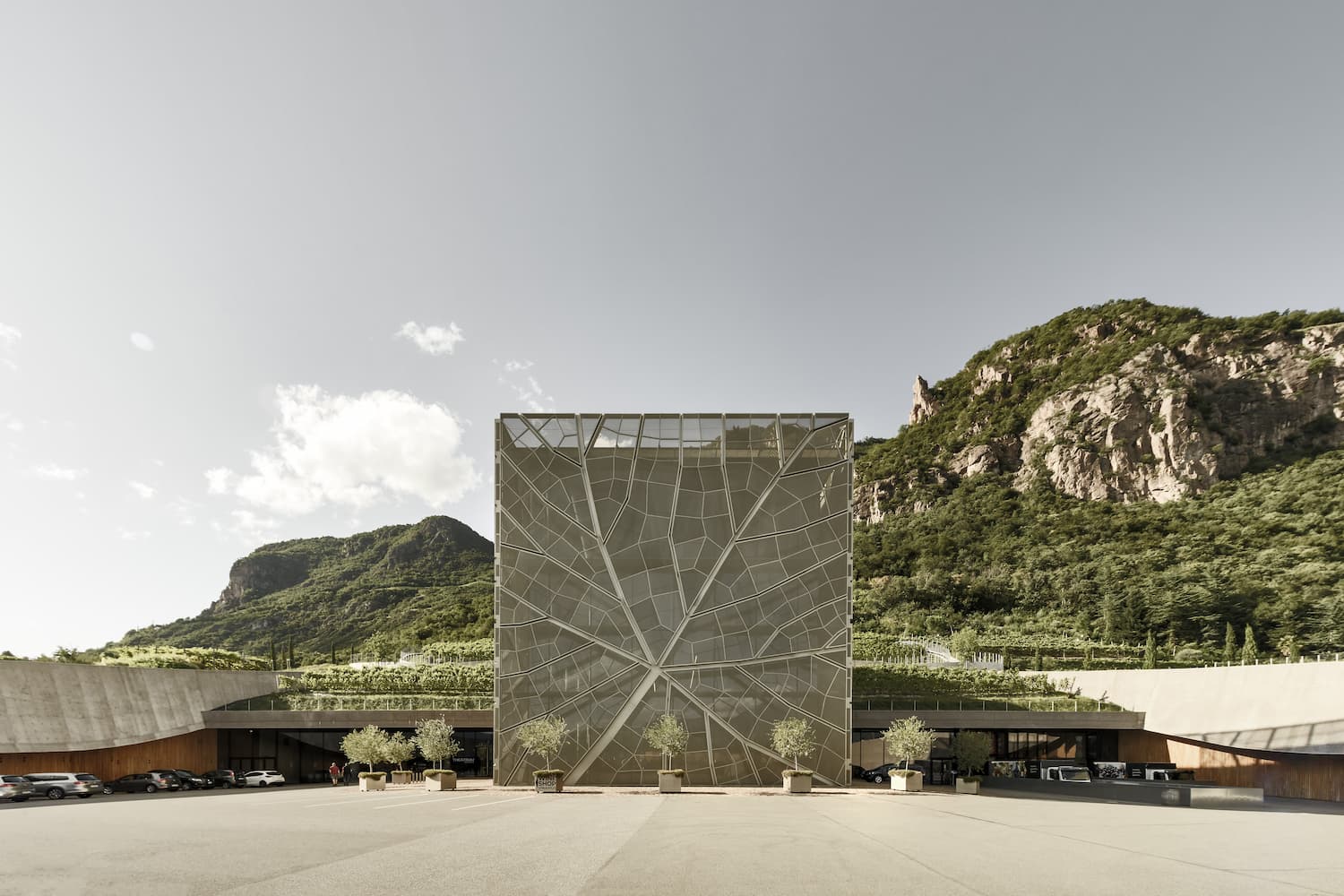North Stars:

Community Support

Waste Management

Carbon Footprint
“Forced to rebuild from the ground up, planners envisioned a new identity: a platform for architectural experimentation.”
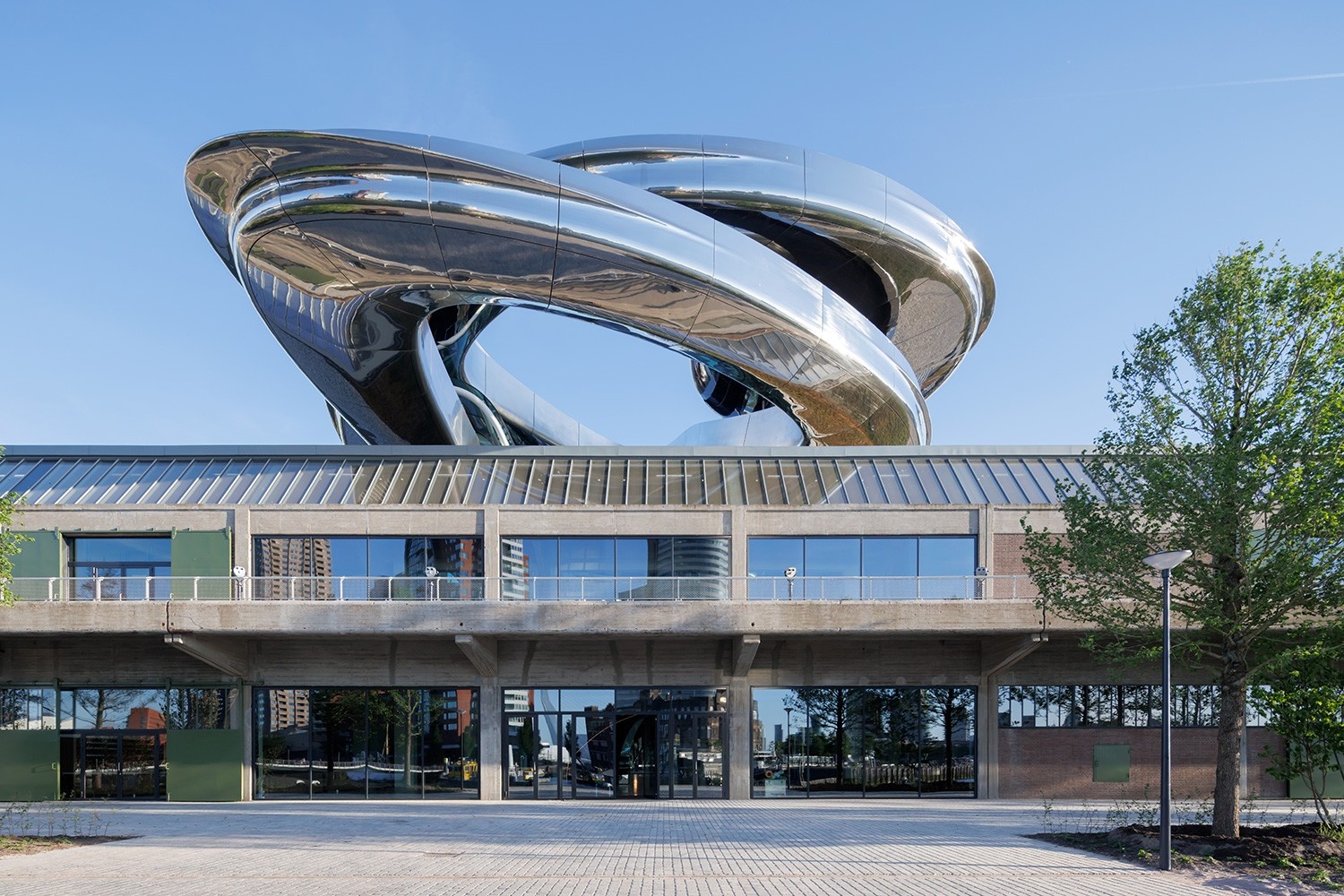
The Tornado above the Fenix Museum. Courtesy of Iwan Baan.
In 2015, Dutch design firm Studio Roosegarde unveiled a 23-foot-tall structure in Rotterdam called the Smog Free Tower. Clad in horizontal aluminum louvers, the tower looked like a cross between a spaceship and a vertical floor grate. Its function? Sucking smog out of the air, compressing it into particles, and transforming it into minimalist jewelry to raise awareness about air pollution.
The Smog Free Tower is just one example of how Rotterdam — the Netherlands’ second-biggest city and one of Europe’s largest ports — uses architecture to address issues like climate action and create livable urban spaces. Every year, it seems that there’s another new work of eccentric but thought-provoking design that turns the genre inside out, from urban floating farms to art museums.
Because of the mashup of styles, it’s been said that Rotterdam lacks aesthetic coherence. Dutch people from other parts of the Netherlands often advise visitors to skip the city and instead seek out classic cities wjere wooden shoes and windmills prevail. But spend time in Rotterdam, and you’ll discover that the lack of conformity is exactly what makes it one of Europe’s most exciting destinations for architecture.
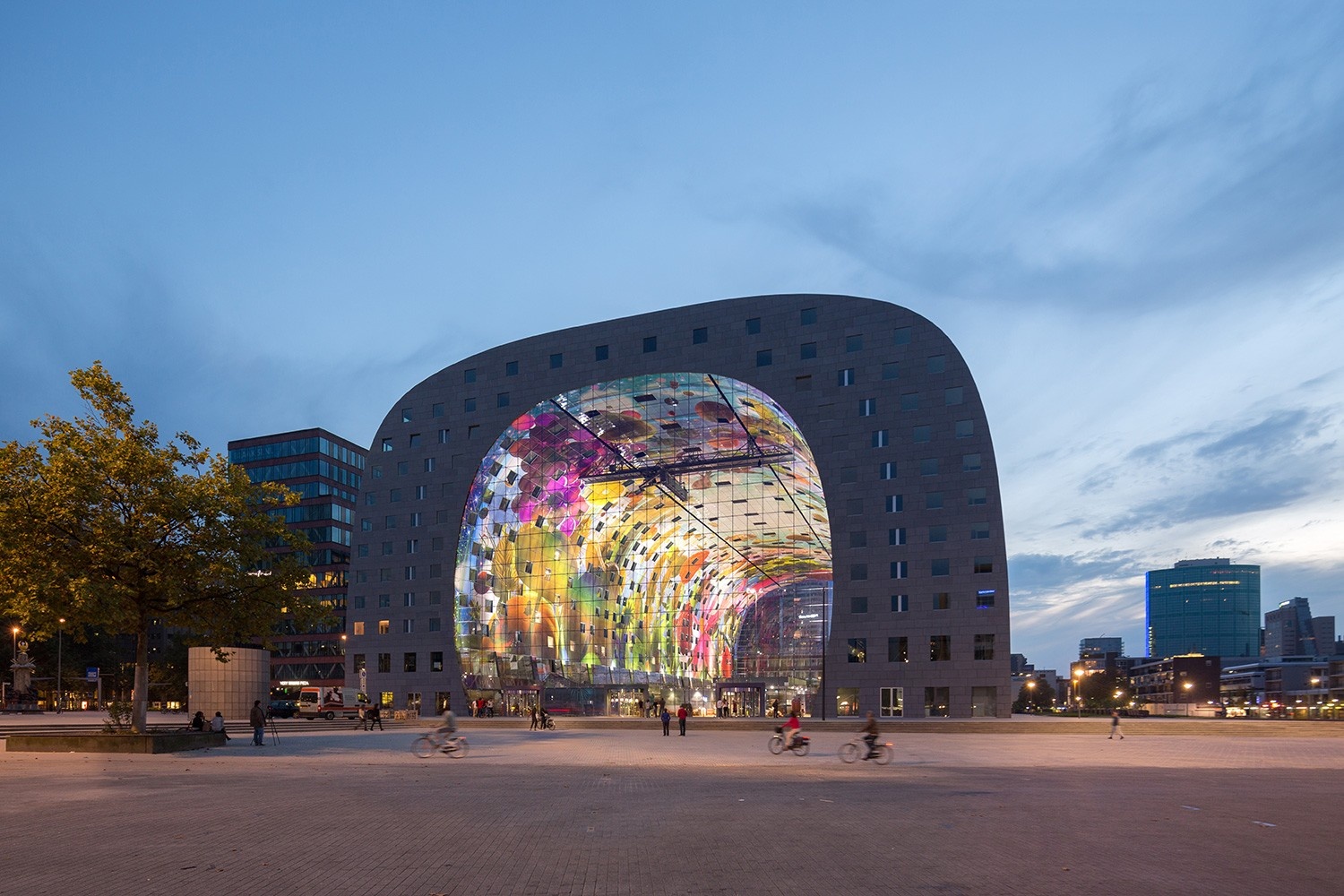
Exterior of the Markthal. Courtesy of Ossip van Duivenbode.
Starting from Scratch
Eighty-five years ago, Rotterdam looked much like its neighbors. Brick-gabled houses lined the canals, and Old World monuments dotted its districts. That changed on May 14, 1940, when the German Luftwaffe leveled the city center.
Forced to rebuild from scratch, city planners embraced a new identity: a laboratory for architectural experimentation. Over the decades, that vision has produced one of Europe’s most eclectic skylines, spanning functionalist modernism to Art Deco.
At its center stands the Markthal, perhaps Rotterdam’s most recognizable landmark. Shaped like a vast arched tunnel sealed with glass at both ends, it encloses the Netherlands’ largest food market. Inside, a colossal mural of fruits, vegetables, and flowers sweeps across the ceiling and walls, earning the nickname “Rotterdam’s Sistine Chapel.”
Punctuating the mural are square windows—the apartments embedded in the arch itself. From them, residents look down on the bustle, living just steps from their own supermarket.
Since its opening in 2015, the Markthal has become a symbol of Rotterdam’s daring architecture. But it has competition. In 2021, the city unveiled the Depot Boijmans Van Beuningen, designed by MVRDV—the same firm behind the Markthal. The mirrored, bowl-shaped building resembles a giant flowerpot, topped with a rooftop forest.
The design matches its function: the depot stores and restores 155,000 artworks belonging to the neighboring Boijmans Van Beuningen Museum. Unlike most museums, which keep their collections hidden, this one opens its storage to the public.
Visitors can peer into conservation studios, wander among artworks, and see behind the curtain of curation. The building also leads on sustainability, generating power with solar panels and collecting rainwater through its rooftop gardens.
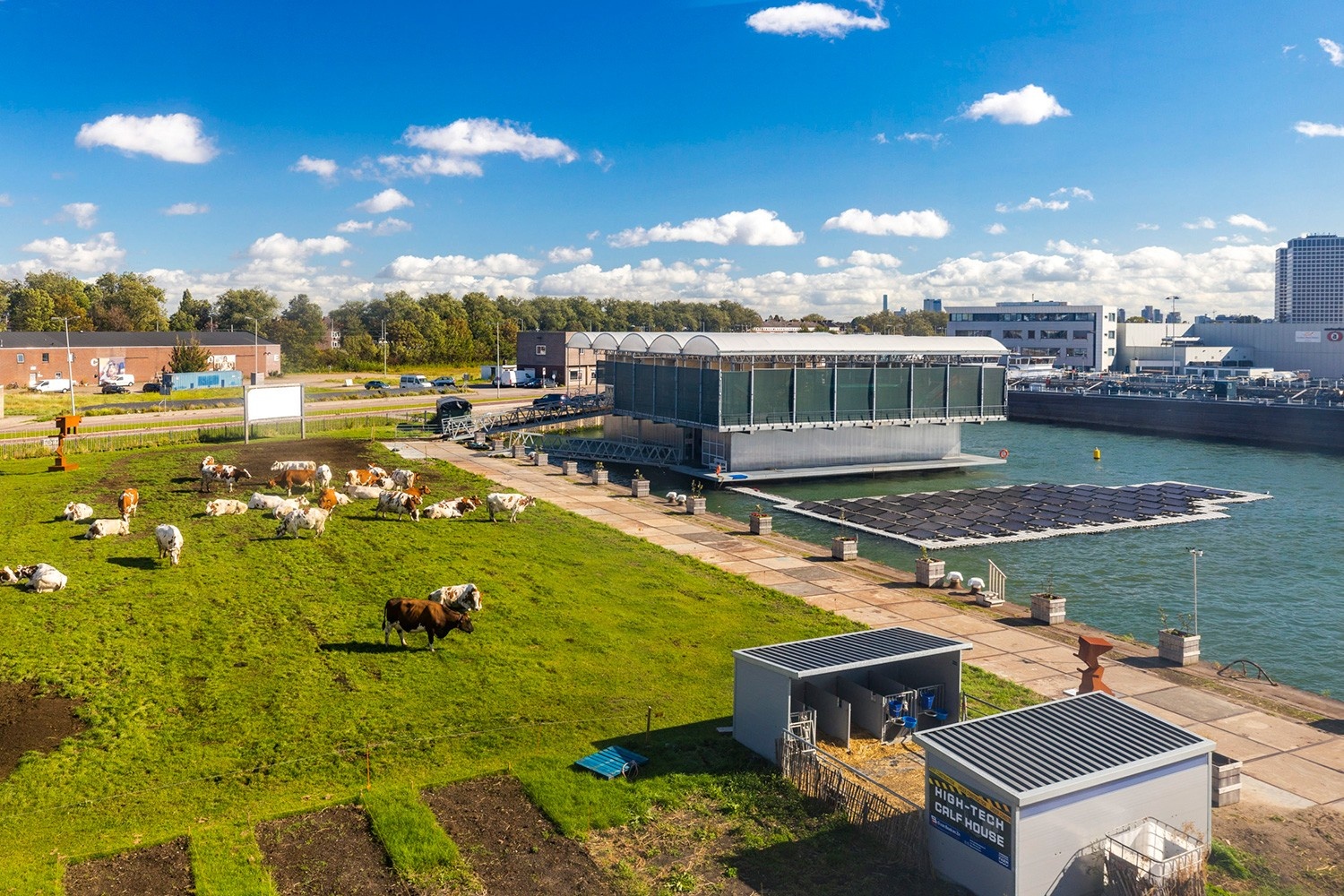
Rotterdam's Floating Farm. Courtesy of Guido Pijper.
Making Design Waves on the Water
A meadow of grazing cows is hardly what you’d expect in the middle of a bustling port city. Yet on Rotterdam’s waterfront, that’s exactly what you’ll find. The pasture forms part of the world’s first Floating Farm, an offshore platform tethered to the quay. Solar-powered and industrial in design, the floating structure is linked to land by a walkway, so cows wander freely between grass and platform.
The farm operates as a closed loop of urban sustainability. Food waste from the city—spent grains, potato peels, lawn clippings—feeds the herd. In return, the cows supply fresh milk and cheese for Rotterdam residents, cutting food miles to zero.
Innovation doesn’t stop there. Rotterdam’s harbor is dotted with other floating experiments, including the Floating Office Rotterdam. Rising three stories from the Rijnhaven harbor, the sleek, solar-powered structure is the world’s largest floating office. It houses a restaurant and offices, including the Global Center on Adaptation, which develops climate solutions. Built to be carbon neutral, the office draws water from the harbor for passive heating and cooling, while a living green roof crowns the design.
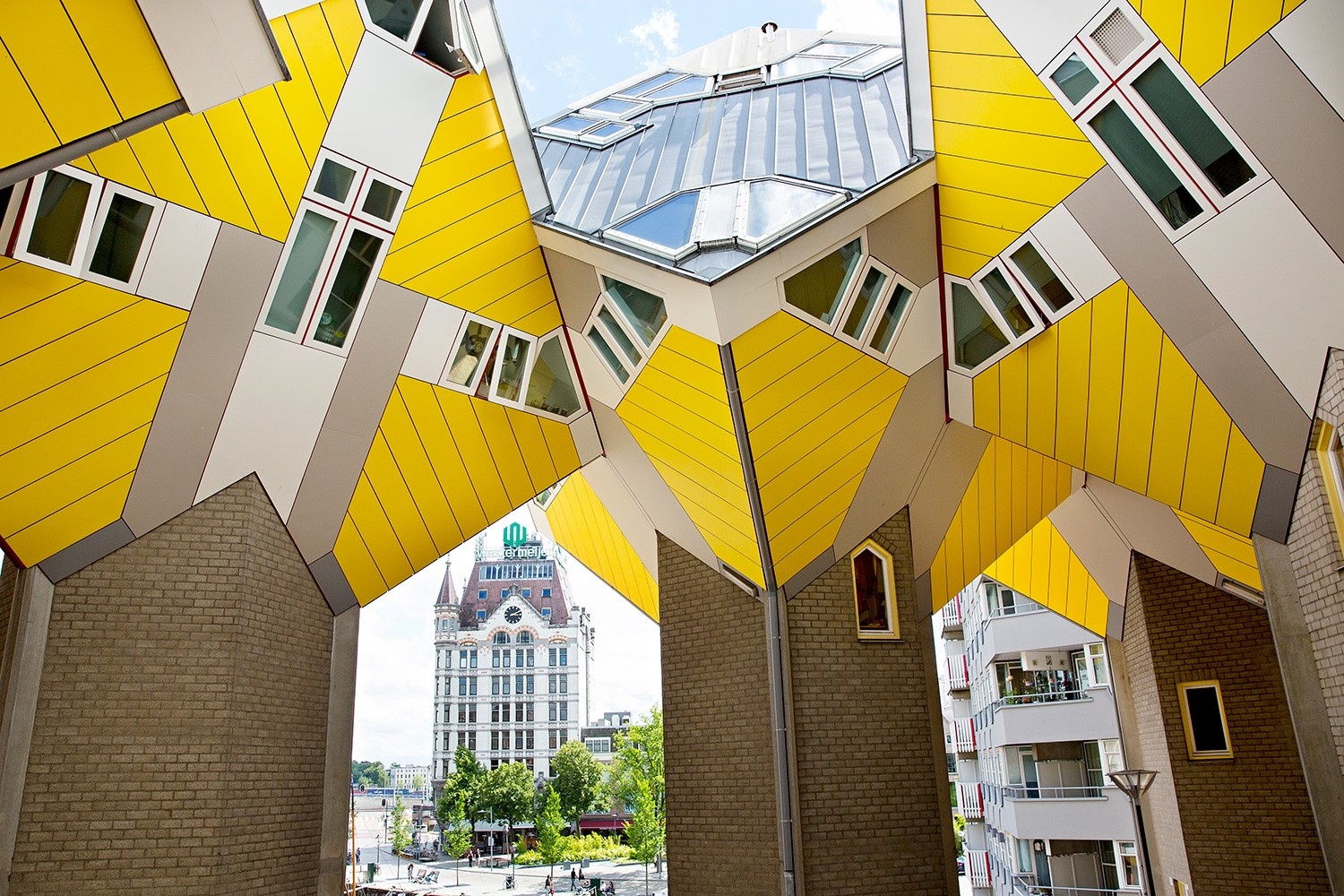
Rotterdam's innovative cube houses. Courtesy of Iris van den Broek.
What’s Past is Prologue
Rotterdam’s appetite for the experimental didn’t start in the 21st century. Even before the war, the city was testing bold architectural ideas and tackling social challenges through design.
One survivor of the wartime bombing is the Van Nelle Fabriek, a factory for coffee, tea, and tobacco built between 1925 and 1931 by architect Leendert van der Vlugt. Its glass-and-steel facade was radical for the time, flooding the workspace with light and air in an era when factories were often dark and oppressive. Today, the complex is celebrated as a UNESCO World Heritage Site and a masterpiece of Dutch modernism, open for guided tours on weekends.
Rotterdam’s mid-century experiments carried forward with projects like the Cube Houses, designed by Piet Blom in the 1970s. Commissioned by the city, the tilted yellow cubes perch on concrete pillars like a surreal forest. One has been converted into a museum, giving visitors the chance to step inside and see what life is like in these unconventional homes.
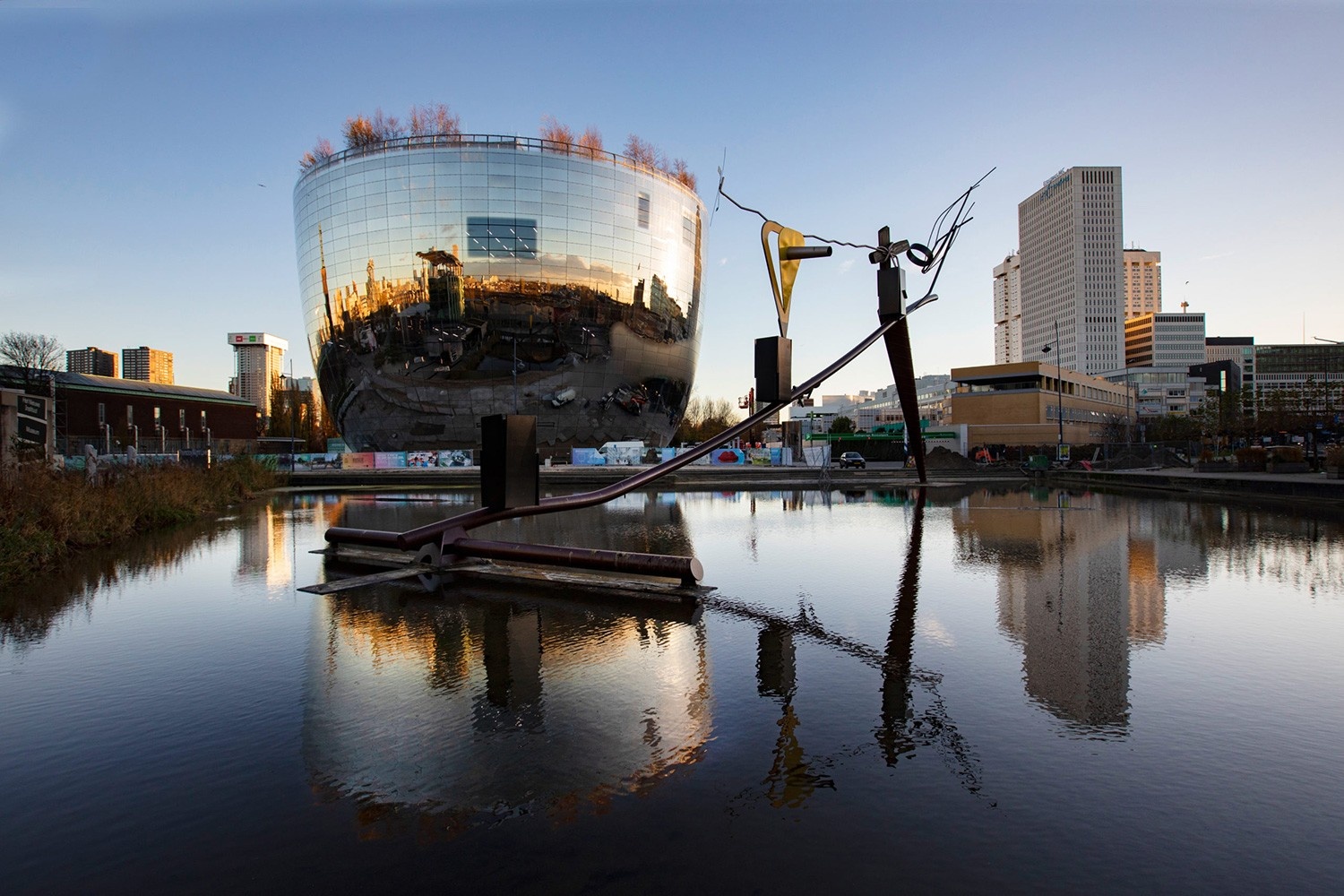
Exterior of the Art Depot Museum. Courtesy of Iris van den Broek.
Creating the Future
Rebuilt after wartime destruction, Rotterdam is often seen as a city that looks forward, not back. Yet the adaptive reuse of surviving buildings keeps its past alive. The Postkantoor, once a post office, now thrives as a mixed-use hub of shops and residences. Nearby, the Fenix Food Factory transforms a former warehouse into a lively hall where locals sample flavors from around the world.
That same spirit animates the new Fenix Museum, housed in a restored waterfront warehouse once owned by the Holland America Line. In the late 19th and early 20th centuries, millions of emigrants departed from this pier for the United States. Today, the museum continues their story, reframing migration through contemporary art and bold exhibitions.
The setting itself tells a layered story. Katendrecht, once home to Chinatown, sailors, and the red-light district, is now one of Rotterdam’s most dynamic neighborhoods. With the Fenix Museum at its heart, it draws visitors from across the globe—just as the harbor has for centuries. Rotterdam’s strength lies in its ability to transform, reshaping its past into spaces that serve the present. Reinvention runs through the city like a current, carrying it steadily into the future.
Exploring Architecture in Rotterdam
While you can view and visit many of Rotterdam’s architectural gems while wandering the city on your own, you can also take architecture-themed walking tours like the guided Highlights Architecture Tour & Depot from De Rotterdam tour. The self-guided ‘Building the City’ podcast with MVRDV founder Winy Maas is also available.

Karen Burshtein is a Canadian journalist focusing on the intersection between travel, design and sustainability. Her bylines have appeared in AFAR, Condé Nast Traveler, Travel + Leisure, TIME, Hidden Compass and more. She likes exploring new places but is just as happy going back to familiar countries to do really deep dives into their culture and history. Follow her on Instagram @karenburshtein.
North Stars: Carbon Footprint, Community Support, Waste Management


